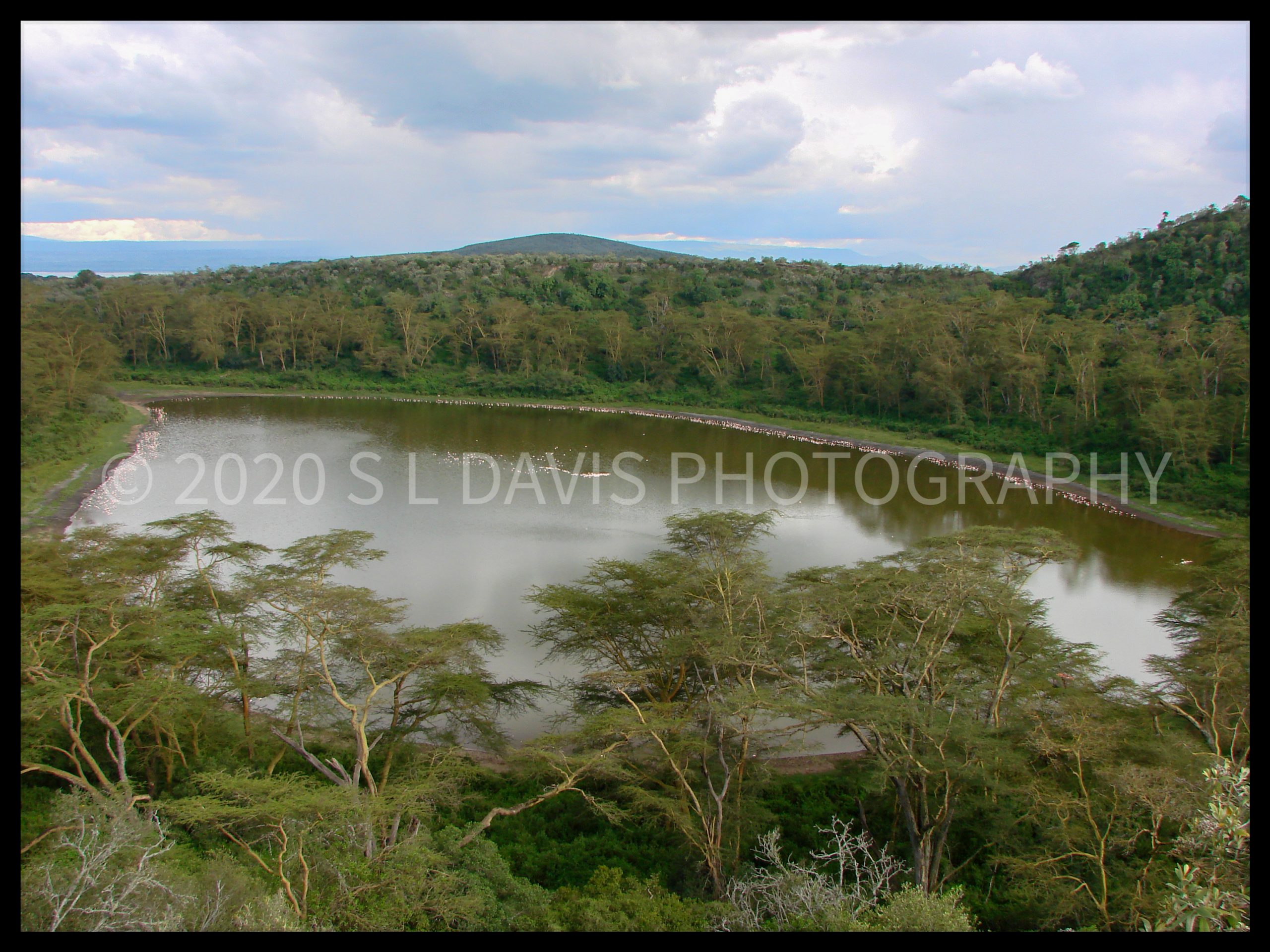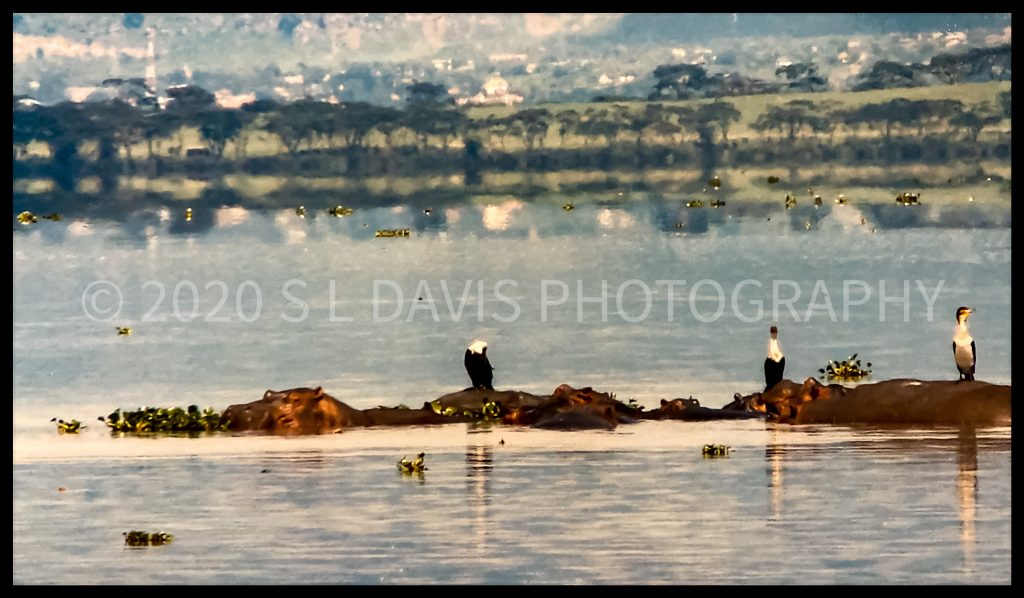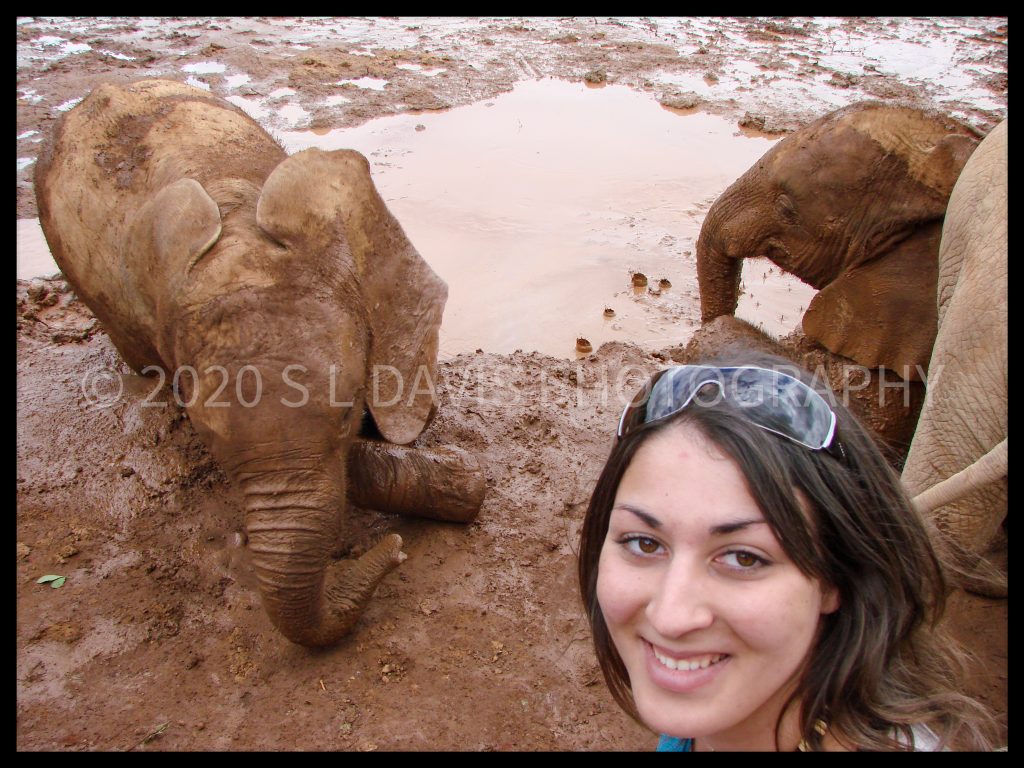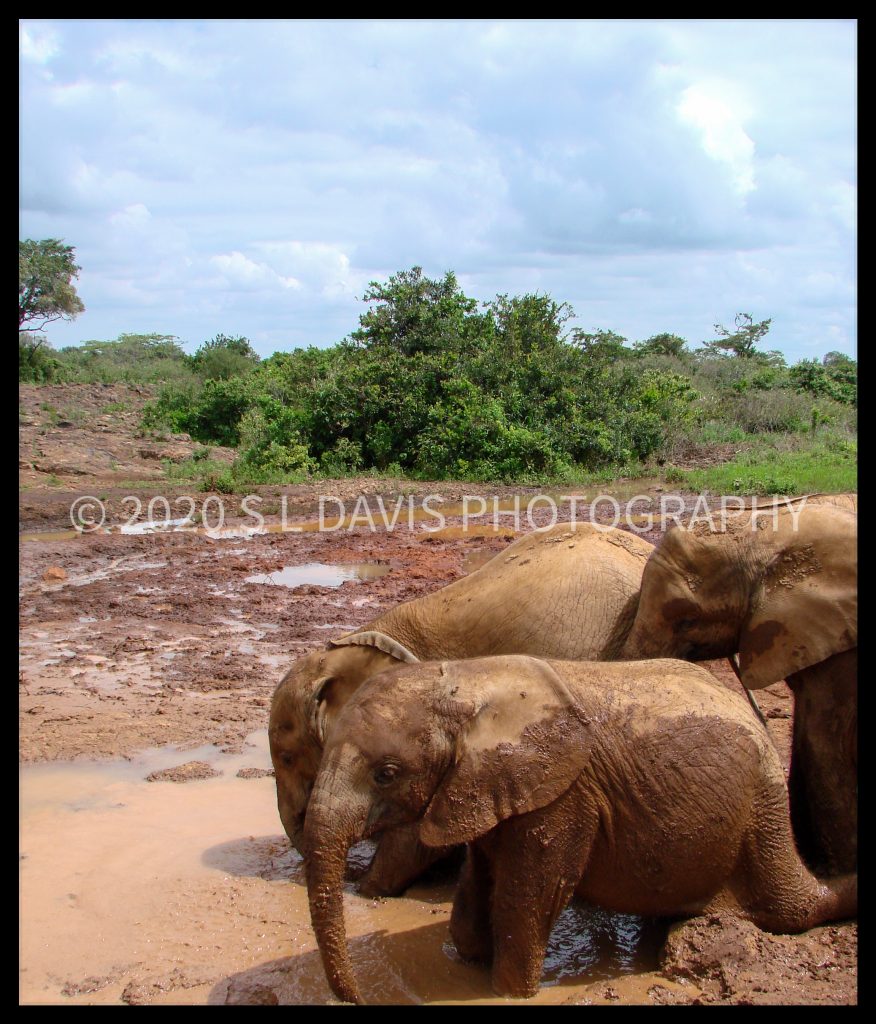
After a restful night it was another early start and I was to visit and walk around Lake Naivasha. There, I would come face to face with some more of Africa’s amazing wildlife but also H5N1.
For those of you who do not recognise H5N1, this is Avian Bird Flu and it was declared a pandemic in 2006. The World Health Organisation had found it was spreading from bird to human and fast. Here I was at Lake Naivasha, immune system shot to pieces and I started to notice a lot of dead flamingos around my feet as I walked around the lake. Just so you are clear how seemingly serious this was in 2006.
In the first two months of 2006 H5N1 spread to Africa and Europe in wild bird populations possibly signalling the beginning of H5N1 being endemic in wild migratory bird populations on multiple continents for decades, changing the way poultry are farmed. On 30th May 2006, six months before I arrived in Africa, the World Health Organisation published the WHO pandemic influenza draft protocol for rapid response and containment, detailing a proposed method for stopping the spread of a pandemic strain of H5N1 at the source.
I was fully aware of this pandemic as millions went into an overdrive of hysteria and the media then, were scaremongering the public like crazy. However, I will digress slightly here. Like the current pandemic we are in now, there are multiple strains of this virus and this virus was already in existence but had mutated. Due to the global exportation and also the migration of birds it enabled the virus to spread faster. This pandemic’s source was believed to be from China, but the first documentation of human fatality was in January 2006 in Turkey. It was understood that in order to catch this virus, you needed to be in close proximity of the infection or in this case an infected bird. To date there has been no substantial evidence that this specific virus can transmit human to human.
Investigatory journalism suggests the first official case of avian flu existence was first identified in Italy in the 1900’s.
Going back to what I was witnessing, I asked a local why there were so many dead flamingos, and his response was Bird Flu. Before you break out in a sweat of terror, I didn’t catch it even though, as I have stated I had a severely weakened immune system as I was still recovering from an acute respiratory infection and I was in close proximity walking around dead infected flamingos. I did not take photographs of these dead bird as that is way too morbid. I did take the below of the alive ones, as life goes on.
I walked on from this experience and you can’t be in Africa without finding an embattled grumpy camel. This grumpy looking ragged one humper, popped up out of nowhere and was kind enough to not spit at me and posed for this photo. You just never know what is going to come out at you from the bushes.
Walking further on around Lake Naivasha I found myself walking amongst Giraffes, Zebras and the illusive Kirk’s Dik-Dik (one of the world’s smallest antelope).
After a good walk around the lake and taking in views, it was back to the lodge to collect our belongings and supplies. We had a small rest period before departure and I decided to go to have one final view of the lake, the lodge overlooked and to my surprise in the middle of the lake, were Hippos.

Hippopotamus are the third largest living land mammal, after elephants and rhinos. They are semi-aquatic allowing them to move swiftly on both water and land. Their feet have four-webbed toes that splay out to distribute weight evenly and therefore adequately support them on land, and their short legs provide powerful propulsion through the water.
Hundreds of hippos are shot each year to minimise human to wildlife conflict, despite the fact that ditches or low fences easily deter them. It is more likely that the popularity of their meat is the real reason for this strategy. Their fat and ivory tusks are also valuable to humans. At the turn of the 21st century, the population of the common hippo declined by more than 95 percent in the DRC. In 2002, about 5.5 tons of hippo teeth were exported from Uganda, which equates to an estimated 2,000 individual animals. Hippopotamus teeth have been excluded from many of the strengthened ivory bans across the world making this vulnerable species at an increased risk of ivory poaching.
Hippo’s are known to attack humans and are amongst the most dangerous animals in the world due to their highly aggressive and unpredictable nature. However, this is generally when they feel under threat, you have encroached their territory or a mother is protecting her calf.
After my exciting encounter with the hippos, who were a good distance from where I was, it was back aboard the truck and a long drive back to Nairobi for a restful night and one last excursion the following day before I would board my flight to the island of Zanzibar.
We arrived in Nairobi early evening and it was alive and buzzing. By this point I had become mozzie fodder and thankfully due the humidity, their biting was having little affect and I was fortunately not itching. I would soon learn that Deet doesn’t really work either.
My night in Nairobi was not restful at all due to the humidity and the ineffective mozzie net over my bed. Before you recoil with fear that I may have caught malaria, I was taking Mefloquine aka Lariam throughout my trip and I had all my other vaccinations completed prior to my trip. Lariam is or was the best anti-malaria drug available, though for some, it can be a bit hit and miss. If you drink excessively on it, as a couple of my fellow travellers did, the potential side effects are, it can make you very ill and you may suffer some rather interesting hallucinations. The two travellers in question, both British women, stopped taking it because of the side effects it had on them, when they kept getting decidedly hammered each evening on an empty stomach and ultimately they unfortunately caught malaria and had to be urgently treated. Thus meaning they missed out on our next experience. Lesson here is, be sensible, take you meds correctly and think of the consequences.
So being groggy from my sleep deprivation, I had to muster up the energy for the final experience on mainland Africa. Our guide Justin refused to tell us where we were going and found great amusement in this. We finally arrived and all was forgiven for keeping such a secret. The Sheldrick Trust!!! Formerly known as The David Sheldrick Wildlife Trust. I would be spending the day learning about the sanctuary and playing with baby elephants!!!
(Here is a lovely photo of me looking dopey and getting covered in mud with baby elephants!!! How lucky am I?)

The work the sanctuary does to help orphaned wildlife, not limited to just elephants is phenomenal. The title of this blog is also a reference to the other experience I would unwittingly stumble upon at the gift table.
We were guided out to this area of muddy land and the rangers began to lead out the babies for feeding time. As you will see in the next photos, they are super cute. However, for babies, whilst they are very playful, they are exceptionally heavy and very strong. These babies are also remarkably gentle too.

The Sheldrick Wildlife Trust was established in 1977 by Dame Daphne Sheldrick in memory of her late husband David and is best known for its Orphans’ Project, the first and most successful elephant orphan rescue and rehabilitation program in the world. To this day it is run by the Sheldrick family. During my time at the Sanctuary and I will cover the work. I met by sheer accident Dame Daphne herself. A truly remarkable lady with amazing achievements. The title of this blog is a reference to a book she wrote “An African Love Story: Love, Life and Elephants”, documenting her life and how the sanctuary began.
For over 25 years Kenyan born Daphne and David Sheldrick, who was an MBE, a naturalist and founding Warden of Tsavo East National Park. They rescued, raised and successfully rehabilitated many wild animal species. Daphne’s involvement with wildlife also spanned a lifetime, and she was a recognised international authority on the rearing of wild creatures. She was the first person to have perfected the milk formula and necessary husbandry for infant milk-dependent elephants, discovering that coconut oil was the nearest substitute for the fat in elephant milk. Daphne was also the first damehood to be awarded in Kenya since the country received Independence in 1963.
She was awarded an MBE by Queen Elizabeth II in the 1989 Birthday Honours. Separately elevated to UNEP’s Global 500 Roll of Honour in 1992, where she was among the first 500 people worldwide to have received this particular honour. She was also awarded an Honorary Doctorate in Veterinary Medicine and Surgery by Glasgow University in June 2000. In December 2001 her work was honoured by the Kenyan Government through the prestigious Moran of the Order of the Burning Spear (MBS) decoration. In 2002, the BBC recognised her with their Lifetime Achievement Award. In the November 2005 , she was named as one of 35 people worldwide who have made a difference in terms of animal husbandry and wildlife conservation. Queen Elizabeth II promoted Daphne Sheldrick a Dame Commander of the Order of the British Empire in the 2006 New Year’s Honours List, ” for services to the conservation of wildlife, especially elephants, and to the local community in Kenya”. That was a few weeks after I had met this remarkable lady! Daphne passed away in 2018, leaving her children in charge of her legacy and the Trust continues to this day.
So what exactly do they do?
The Trust protects a number of threatened and endangered species across Kenya including black and white rhinos, as well as iconic animals like African elephants. By protecting keystone species, they are ensuring a plethora of other animals and ecosystems continue to survive and crucially thrive. The biggest threat they face each day is poaching and they have numerous rangers across Tsavo putting themselves at risk of death to rescue and protect these magnificent creatures. The Trust, is mostly recognised for rescuing orphaned elephants and rhinos.
Whilst I was there, the BBC were also there with Michaela Strachan filming “The Elephant Diaries” to raise awareness of the work being carried out by The Trust.
Back to playing in the mud…
These babies were all about feeding and playtime. One in particular decided it needed a hug and I was to honour this messy experience. Problem is these babies weigh around 200 pounds upwards and I don’t, but I wasn’t about to deny those long lashes, affectionate trunk and baby roars. I got absolutely caked in mud. They have very soft skin despite the roughness of the mud which is a natural sunscreen for them, though the rangers will apply actual sunscreen to protect them, especially their ears. They nudge you, they guzzle bottles of formula and they hide their trauma from us incredibly well and this is attributed to the work the rangers do, spending up to a decade comforting these amazing beasts. They also have an incredible memory.
Here are a few more fun facts about elephants you may or may not have known and so far you will have learned from my earlier blog that a guinea pig looking creature called the Rock Hyrax is a close cousin of the elephant.
African elephants (Savanna) are the largest land mammal in the world. Their trunk is used for communication and handling objects. Their ears allow them to radiate excess heat. Upper incisor teeth develop into tusks and grow throughout their lifetime. The tusks cannot be removed to protect them from poachers as they contain many nerves, that said the male elephants do also use these tusks to battle each other. The Savanna and Forest Elephant are two subspecies of African elephant. Savanna elephants tusks curve outwards and they are larger than forest elephants. Forest elephants are generally found in the Congo. The trunk of the African elephant has two finger like features on the end which they use to grab small items. Both male and female elephants have tusks. They use these tusks during the dry season to dig riverbeds and create watering holes many animals can drink from, as well as using their tusks to dig for food and water and strip bark from trees.
Elephants live in female led groups and the lead female will be known as the Matriarch. Lower ranking females are known as cows. Female elephants have the longest pregnancy in all mammals at a staggering 22 months. They will generally have one calf every 2-4 years. So with that in mind, you can see why it is crucial to protect this vulnerable species from poachers as they have a very valuable role in the African ecosystem.
You’ve heard the term “A memory, like an elephant”? Well there is truth to this term. (Some will attribute this term to me on memory, though in my case it’s sometimes a curse)
Allegedly, Elephants and Women never forget an injury… (I definitely know a few men too that are like this)
Extensive observations have confirmed that elephants do remember injuries and hold grudges against their abusers. One study of African elephants found that the animals react negatively to the sight and scent of clothing worn by members of a nearby Masai tribe of people.
Why are they hacked off with the tribe, I hear you ask?
Well, Masai men spear elephants as a customary display of their masculinity. So you can’t blame elephants for wanting to murder an annoying little prick holding the bigger stick with sharp point that causes it great injury and or death. Poachers and Tribes have a lot to answer for…
An elephant’s brain is 5 kilograms in weight– larger than any other land animal. It has been scientifically proven that over many years, bearing in mind elephants can live up to 70 years, they store memories of friends and enemies. Enough time to ensure should they cross paths with their abusers again, the abuser won’t be getting away so lightly. Even though they do not have good eyesight, ironically.
I was sad to not spend more time with the trust and the amazing babies, but my journey on the mainland had come to an end and it was now time to make my way to the airport the following morning and onto Zanzibar for what my travel agent thought was to be a week relaxing on a beach. She really didn’t know me that well…











